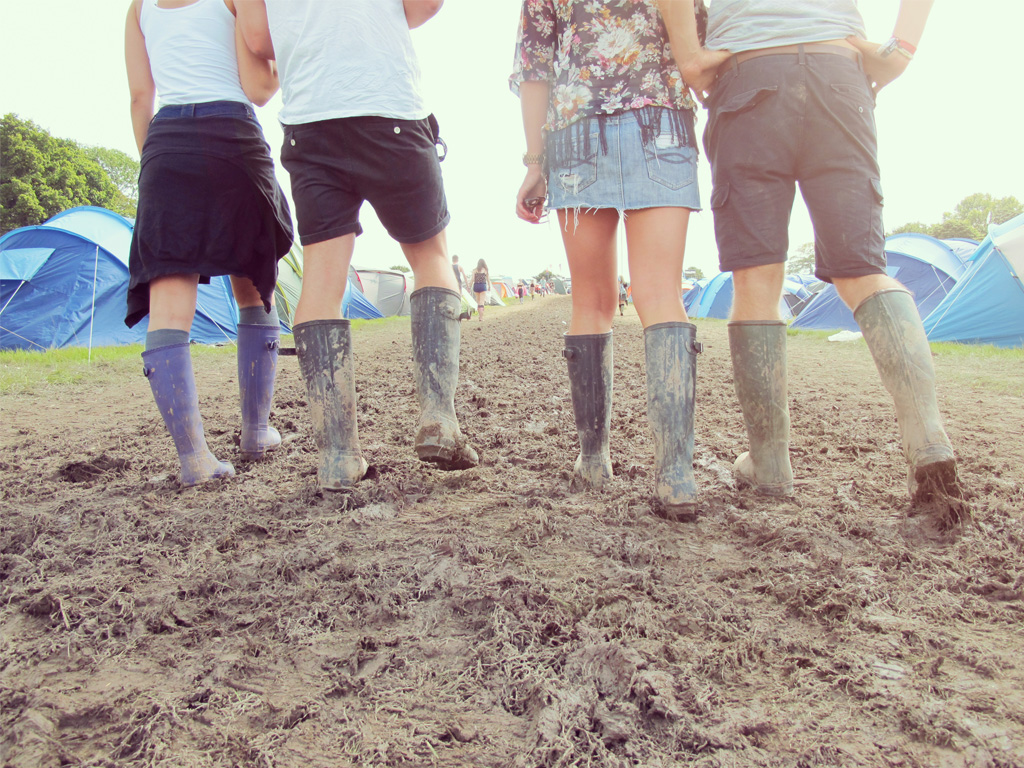
It’s festival season, music lovers of all ages are descending upon outdoor summer music events, to have fun with friends and family.
It is also the time of year when podiatrists see foot and leg conditions that are only encountered at festivals.
Professional medical teams support these larger events, treating thousands of patients each year. They usually offer a full medical and emergency service, including podiatry, dentistry and physiotherapy from on-site hospitals.
Podiatry was introduced after a huge increase in foot problems were seen at the (wet and muddy) Glastonbury festival, and teams of experienced podiatrists have been devotedly supporting numerous large and many smaller events since.
The podiatrists have expertise in many conditions, including diabetes and musculoskeletal conditions. At festivals, emergency podiatry comes into its own as a speciality, as these conditions present a unique set of challenges.
Festival going can be like completing a sporting event. It is easy to cover 10 or more miles a day, often on uneven and muddy ground.
Blisters are the most common foot complaint seen. The main cause of blisters is the wrong choice of footwear, when long hours of walking and standing on rough ground takes their toll.
Our main dilemma with them though is ‘to pop or not’.
The pain from blisters often resolves if the fluid is drained, and while this can speed up healing, it also introduces a risk of infection – particularly in the often-dirty conditions of a festival. If a blister is already infected though, the specialist must drain it.
Strapping blisters with rigid tape under tension and then adding a redistributive padding over the top is often the most comfortable choice.
Patients are made aware of the risks and benefits of any treatment and can make an informed choice. The most important thing to remember though is not to ignore blisters. The pain they cause makes people change the way they walk which can lead to even more leg and back problems.
Ankle sprains are also something we see a lot of. Most commonly these are inversion injuries, often caused by slipping in mud.
Some festivals provide X-ray facilities on site, so acutely swollen ankles can be accurately assessed to see if they are fractured. If so, they are plastered right there and then, and the patient can choose to stay or leave the festival.
Ordinarily, when deciding whether to x-ray an ankle, a general rule is to ask if the patient can bear weigh on it (one of the ‘Ottawa’ rules). This isn’t applied at festivals though as alcohol and drug use can mask pain. One festival goer had danced all night on an ankle that was fracture in three places. This was due to taking recreational drugs in the form of Ketamine and unable to feel it.
The main aim of treating ankle sprains ‘in the field’ is for protection. Strapping the ankle and the provision of crutches can allow the patient to stay on site if they wish but this can lead to long-term possible complications.
Puncture wounds are frequently seen when festivalgoers go barefoot or wear flimsy footwear.
Festivals are strict about not allowing glass on site, but there are other dangers from tent pegs, wood splinters or abandoned drink cans, which can result in some nasty injuries that need to be cleaned and dressed to help prevent infection.
‘Welly leg’ appears to be a unique yet common challenge at festivals. Lots of people wear wellies at festivals, even if it is dry. Wellies are made of rubber which can irritate the skin if your socks are shorter than the boots, and this can get infected, resulting in more severe welly leg.
We see ‘trench foot’ too. It is really called immersion foot and is much more prevalent at wet, muddy festivals. The feet look like they have been in the bath too long, but it can worsen into deep, painful fissures under the foot that are prone to infection and subsequent cellulitis and numbness. Getting the feet dry rested and exposed to the air are essential to halt its progress.
Post festival ‘numb foot’ is a milder version of it, due to feet getting damp in an airless environment, which often takes several months for full feeling to return.
Other conditions we see of the festivalgoer are much the same as in the real world, and include ingrowing toenails, plantar fasciitis (heel pain), corns/hard skin, cellulitis, Morton’s neuroma, tendonitis and gout.
Top 10 Tips for festivalgoers’ feet
- Remember you’ll be in a farmer’s field for a few days and have appropriate footwear for the conditions. Generally, this would mean good quality hiking boots or well-fitting Wellington boots with plenty of clean, dry long socks. On the dry years and good quality pair of trainers might suffice.
- If you have a history of previous ankle sprains or if it is slippery under foot, wear hiking boots that protect the ankle.
- Get used to wearing your footwear before attending the festival. Wearing new shoes and wellies for the first time during a festival can cause problems.
- If wearing wellies and shorts, make sure you have socks longer than the wellies.
- Air your feet overnight by taking off your footwear and change into dry socks frequently.
- Avoid walking on muddy sloping banks.
- Limit the amount you carry – injuries frequently occur on the way into the festival when festival goers are laden with heavy rucksacks and tents.
- Don’t walk around the site barefoot (resist your inner hippy).
- Don’t ignore blisters – they can alter your gait and lead to more serious problems.
- Likewise, don’t ignore infections. The medical teams are there to help you.
For more information on caring for your feet visit the College of Podiatry www.cop.org.uk

